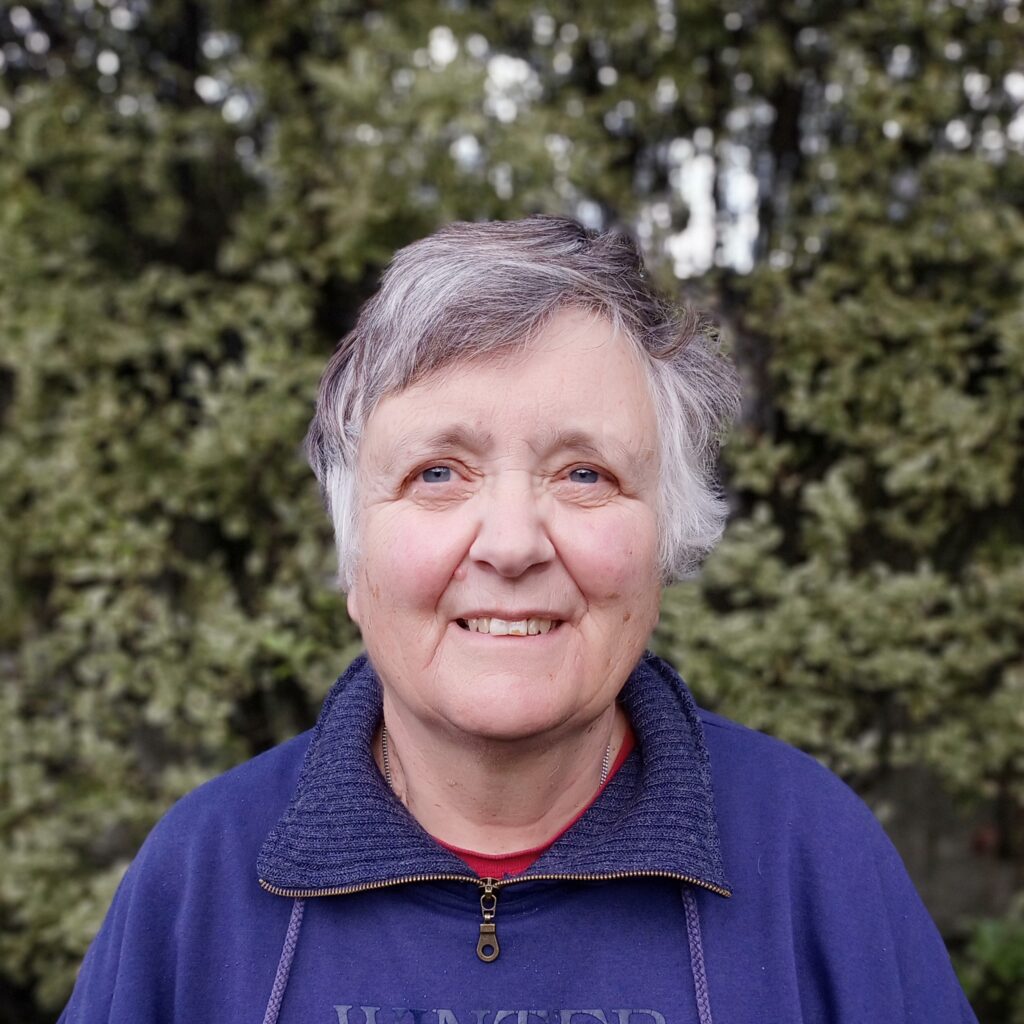In 2020 Joan and Bruce bought a block of land in the Makara Valley with the intention of living a more sustainable lifestyle and of restoring habitat. In November that year about thirty members and friends from A Rocha’s Wellington local group met for their end-of-year gathering at Joan and Bruce’s Makara block to have a picnic and look over the potential restoration sites and discuss possible approaches and planting options.
A few years after the initial gathering and planning, fellow A Rocha members were back to help Bruce and Joan with planting this month. The group were to work on the wetland area with about 750 plants needing to be planted on either side of Makara Stream and in the paddock on the eastern side.
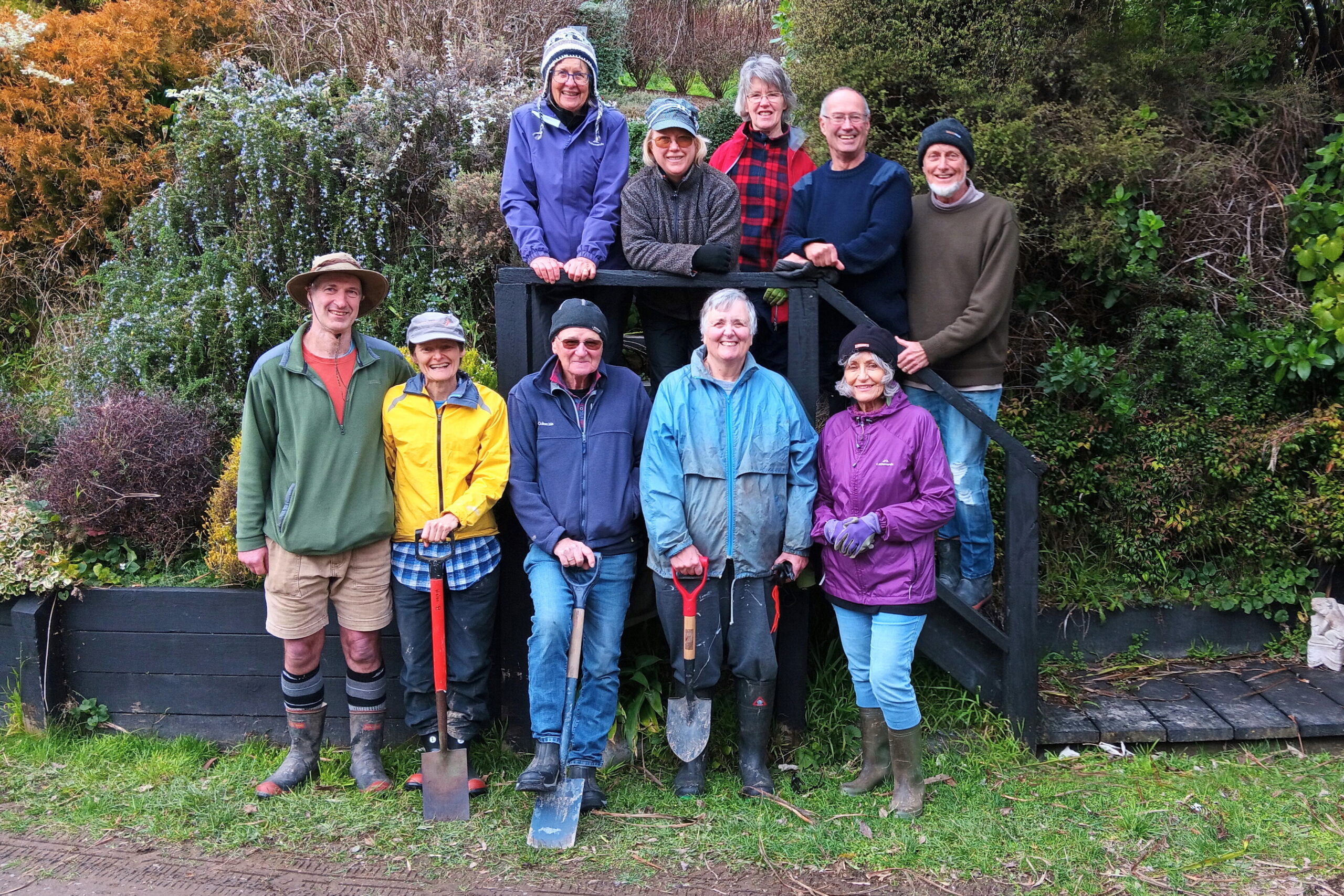
After a briefing by Bruce who showed us the planting plan and reminded us not to plant trees under the power lines or on the right of way, we walked down to the wetland paddock.
We began by planting a line of plants beside the Makara Stream where it flowed alongside Bruce and Joan’s access drive. This was to help stabilise the stream bank which was being undercut by the water. The group put wetland plants such as flax, toetoe and sedges along the stream to help stabilise the bank and provide habitat for fish and eels. Some plants were easier to plant while standing in the stream.
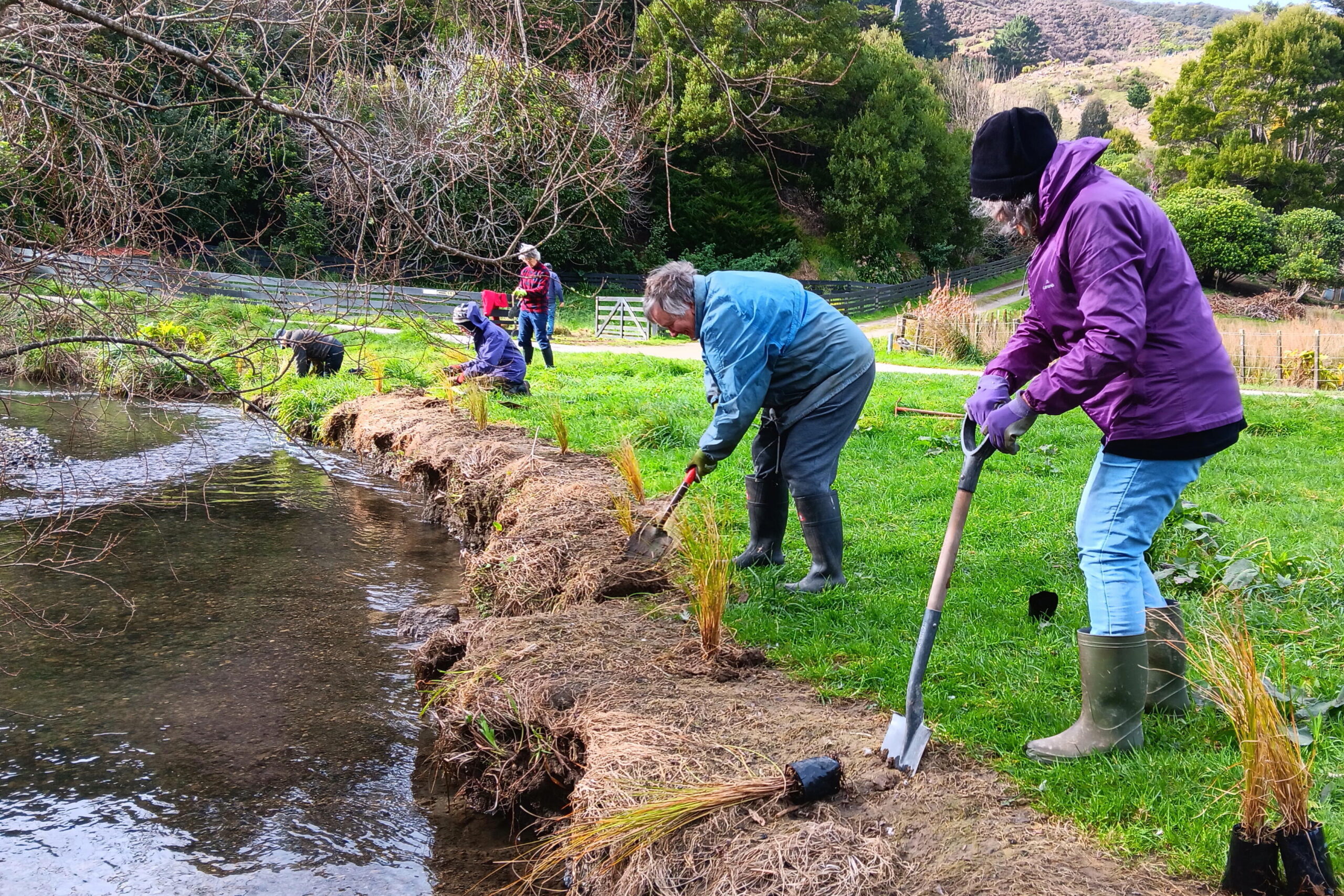
Then we went across the drive in the paddock and we continued to plant on both sides of the stream and further up the paddock. Meanwhile Bruce was busy wheelbarrowing loads of plants onto the site and distributing them to the areas where they were to be planted.
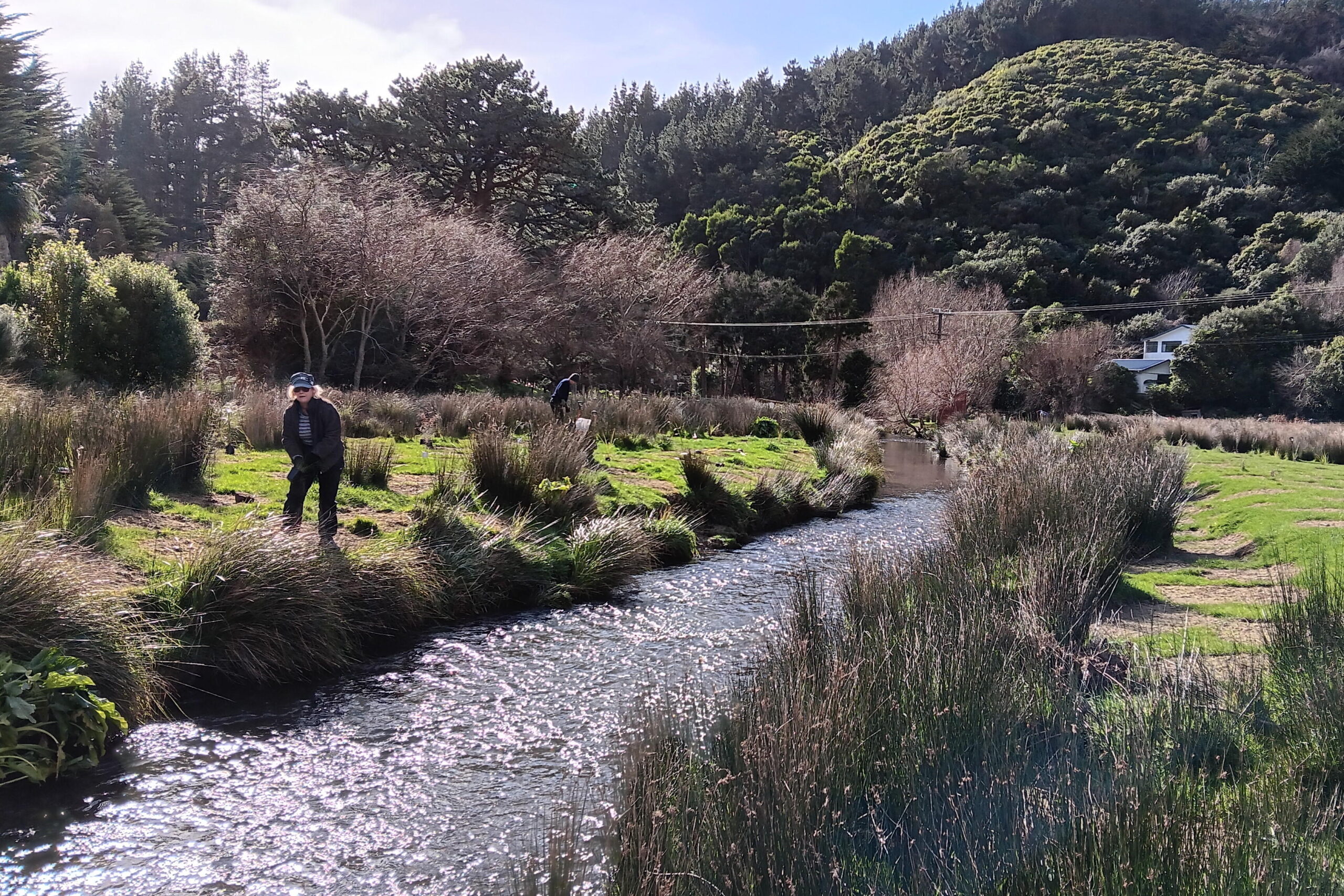
Bruce and Joan had done a lot of work preparing for this planting day. New fencing had to go in between their paddock and the neighbour’s land to exclude the neighbour’s sheep. The sheep had not been excluded for long so the grass was still short and a lot of circles sprayed where plants were to go — this made for easier planting.
Some volunteers planted trees further up in the area where they hope will rewet naturally. Bruce had hoped to rewet the marshy area but is not allowed to change the hydrology of the area without consent. Applying for the consent proved to be a long and expensive project so they are leaving the hydrology as it is and hoping that, over time, the trees and other plants being planted here will help to slow the runoff and rewet the land naturally.
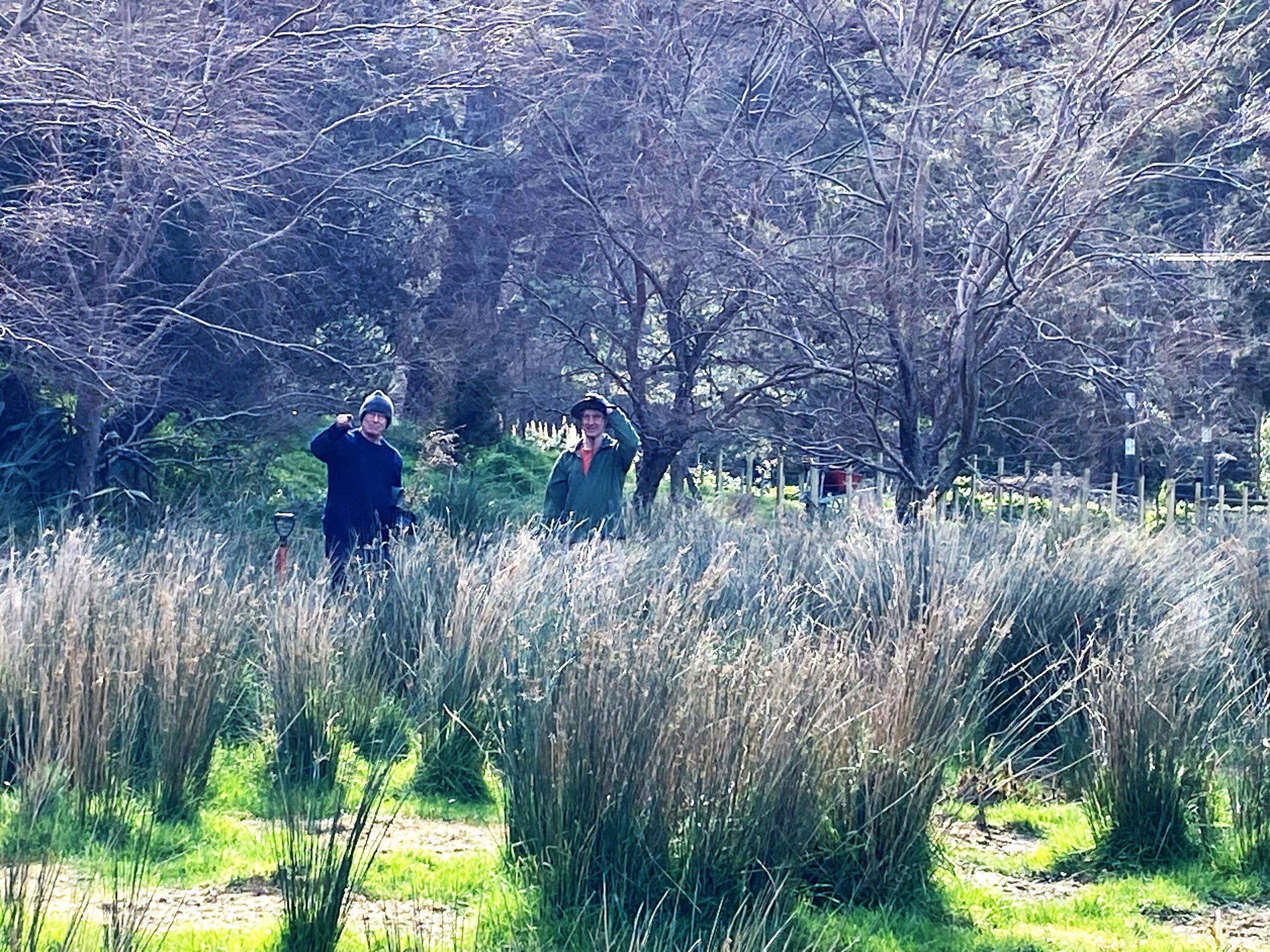
We stopped at lunchtime for barbequed sausages, beautiful baked potatoes made by Joan and various other contributions from different people.
After lunch some of the group had to leave but several returned to the site and continued for another couple of hours. On our way we checked out the eels under the bridge.
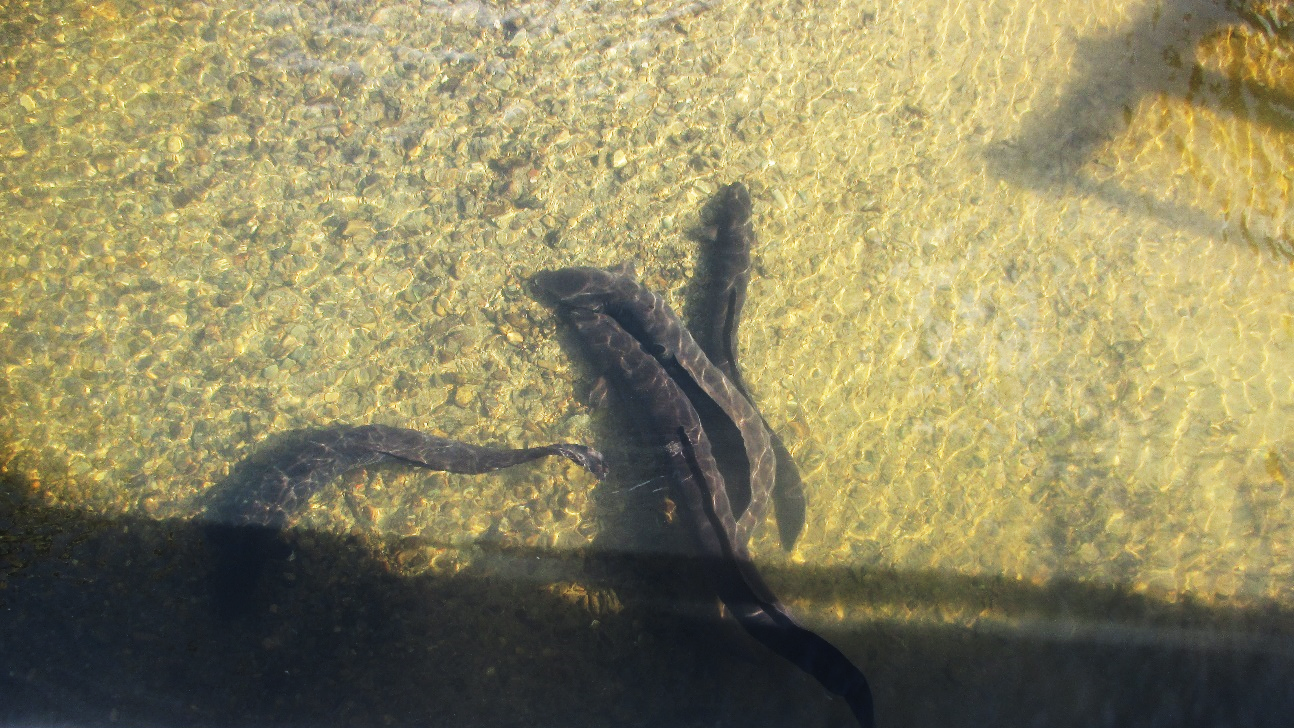
A couple of days later Joan reported, “Thank you for such an amazing planting day. Thanks so much for the great photos too. God certainly blessed us with a lovely day in the ‘Awatuna’ wetland as my sister called it after the place where Mum’s family lived on the West Coast and the tuna watching close by. Can’t believe we did that much with such a small team of ten. We’re still going flat out putting on protectors as the pukeko are invading and they can destroy the plants. We didn’t know they were that bad, but they are like sheep in their destructive powers towards young flax and cabbage trees. Got a lot done but still a mountain in the lounge to put out and still got some swamp maire to go in. We’re really enjoying being down there and having a cuppa by the stream.”
